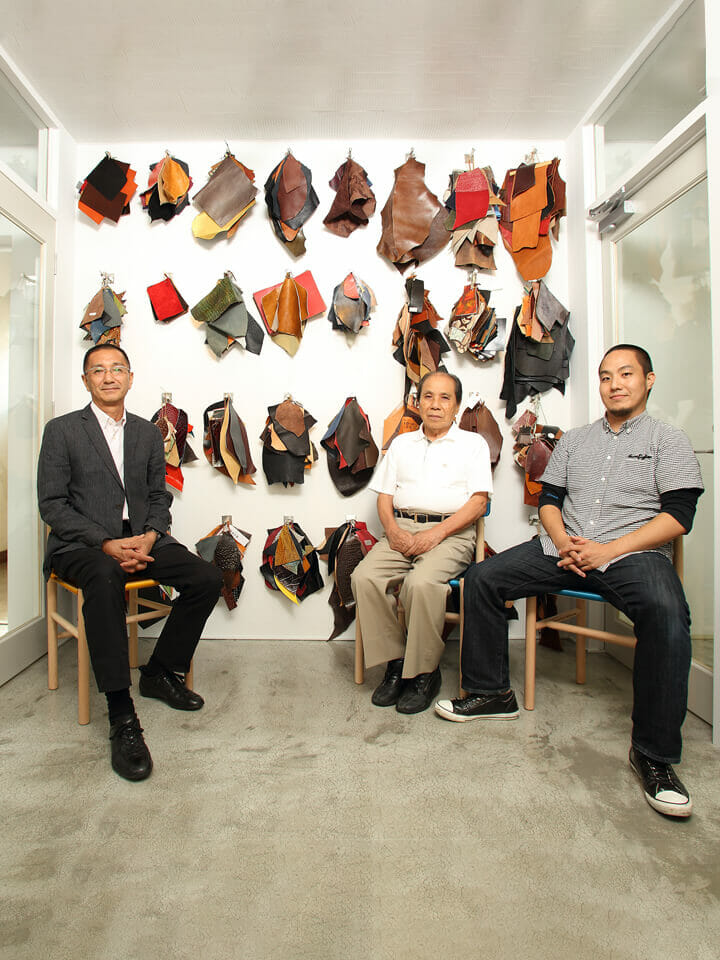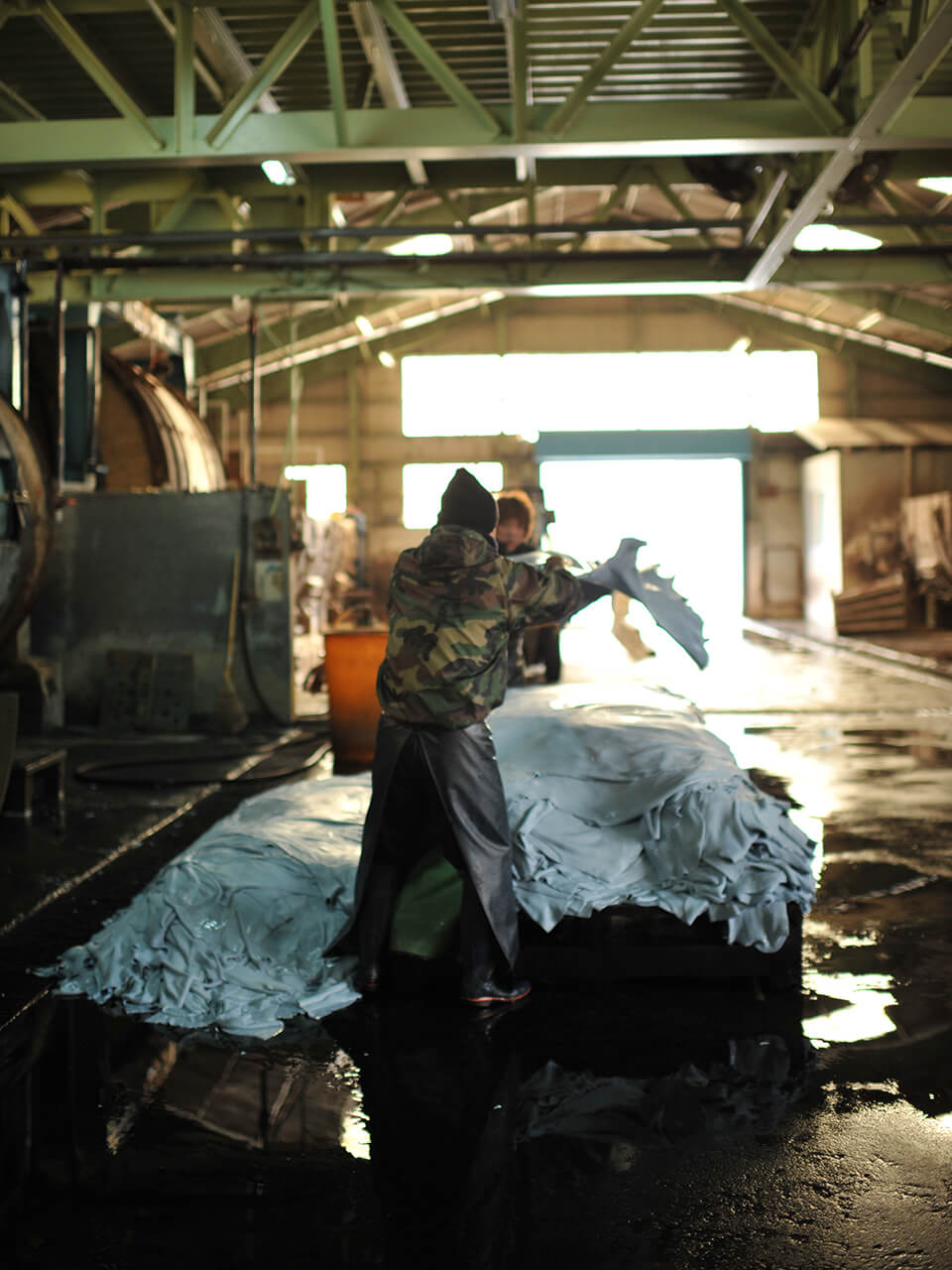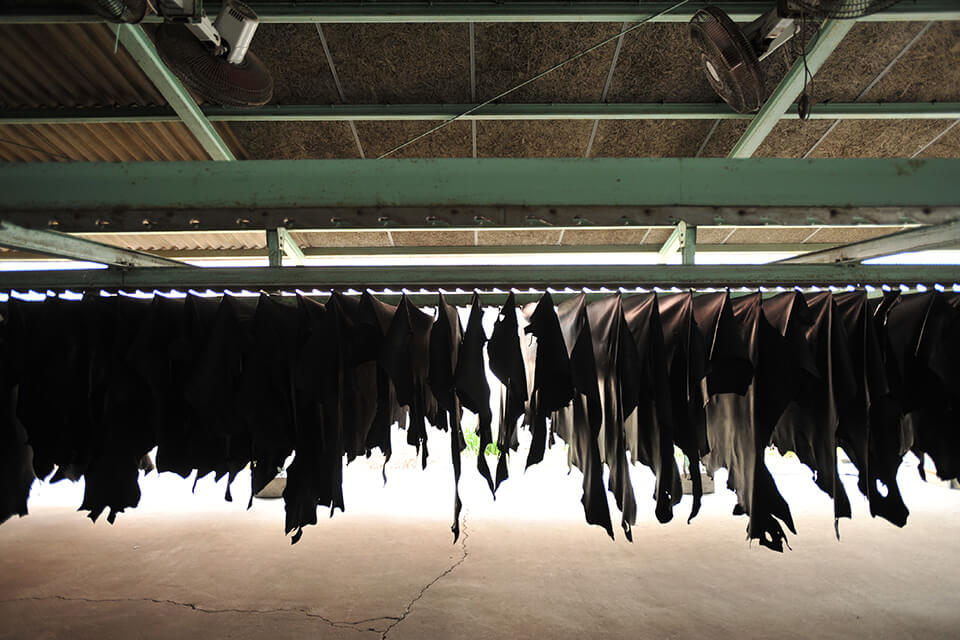
Creative: Moriyoshi x Kawazen Leather
Moriyoshi x Kawazen Leather:Challenges are the base for good craftsmanship

Only one. It is a word often used when expressing leather. Just as no person is the same, so are the animals whose raw hides become leather. That is what individuality is. Sometimes it is called ‘flavor’ or ‘character’ and is preferred, and other times it is rejected in manufacturing because of its "unevenness". That is the fate of "natural" material.
One of the reasons why Japanese craftsmanship is praised is the sincerity and honesty of the craftsmen. Whether they make 100 pieces, or 1000 pieces, they always meet the highest of standards. Their craft is not influenced by the limited time they have. That is the pride of being a craftsman. That is why craftsmen who handle "natural" leather need outstanding skills and experience.
“No leather is as difficult as furniture leather,” says Yoshihiro Kawakita of Kawazen Leather, a leather wholesaler in Nagoya. It has been five years since he jumped into the world of leather, which is a family business, leaving the glamorous advertising industry behind. He is still young, from an industry perspective. "He’s very enthusiastic about learning, and sometimes he teaches us things that we don’t know," says Moriwaki of Moriyoshi, a tanner in Tatsuno City, Hyogo Prefecture. "Tanner, chemical maker, test sites. If he has a question or is not sure about something, he goes into the field to get his answers. He is a very quick learner. And it's really interesting for us to get perspective from someone who has come from another industry.” What Mr. Kawakita was interested in was leather for furniture. "It's a special genre. The leather has to be very durable. Furthermore, the surface is large. One sheet is only enough for one surface of a sofa. If it is a small part, you can cut the leather avoiding scratches etc. but with furniture, that’s not the case. " Currently, furniture leather used in Japan generally does not have a grain side. This is because the scratches can be hidden and the standard quality can be maintained. The coating film is thickly applied from above to create the mold. Furthermore, to prevent sunburn and discoloration, the coating film will become thicker and thicker. It can be said that the character and the quality of the sofa, which is thought to be authentic leather, is not actually the "natural" look of the original leather. “Of course, the leather is perfectly good in terms of spec. However, customers think that this leather, the type that is rarely used in handbags and clothing, is what natural genuine leather looks like. Sometimes even the furniture designers who make it don't know about the grain side of the leather. "

Moriyoshi's factory where skilled craftsmen and young imaginations create new possibilities for leather.
This was an opportunity. Just do what other people aren’t doing. But this is not an easy task. In order to maintain a certain level of quality, it is necessary to make the coating more uniform than ordinary furniture leather, and at the same time, in order to make the most of the natural leather, the coating must be made as thin as possible. "It's like putting on light, natural looking makeup. For furniture leather, you usually apply it with a machine, but Kawazen wanted to make thin and soft leather. And with a grain side. With this, it's easy for the skin to get caught in the machine. Furthermore, if you want that light makeup, you have to apply it by hand. " Moriyoshi continues to focus on research and development of the latest technology, such as completely waterproof non-chrome leather and tannin tanned leather. Such a tanner receives a request to go back to basics. "Applying the coating as thin and firmly as possible. This cannot be done by machine, and it’s a lot of work, but it's the only way to meet the demand for thinness and durability. Only a few companies, including Moriyoshi, were able to take on such a request." The result is a leather called "SENSUOUS".

Hand-coating work. Although it is not efficient, it creates a leather look that cannot be achieved by machines.
Karimoku, one of Japan's leading furniture makers. "They are extremely strict on quality control," says Kawakita and Moriwaki. "They are a rare furniture maker who has solid knowledge of leather. Since the center of their product is wood, it is rewarding to work with them as a professional who handles the same natural materials." That furniture maker who understands such natural materials has been using "grained" and "hand-coated" furniture leather for many years. What makes leather good? The journey of the leathermen in pursuit of the answer has just begun.

Moriyoshi has a color proofing room. Mr. Kawakita suggests that a unified environment is needed for manufacturers, wholesalers, and tanneries.